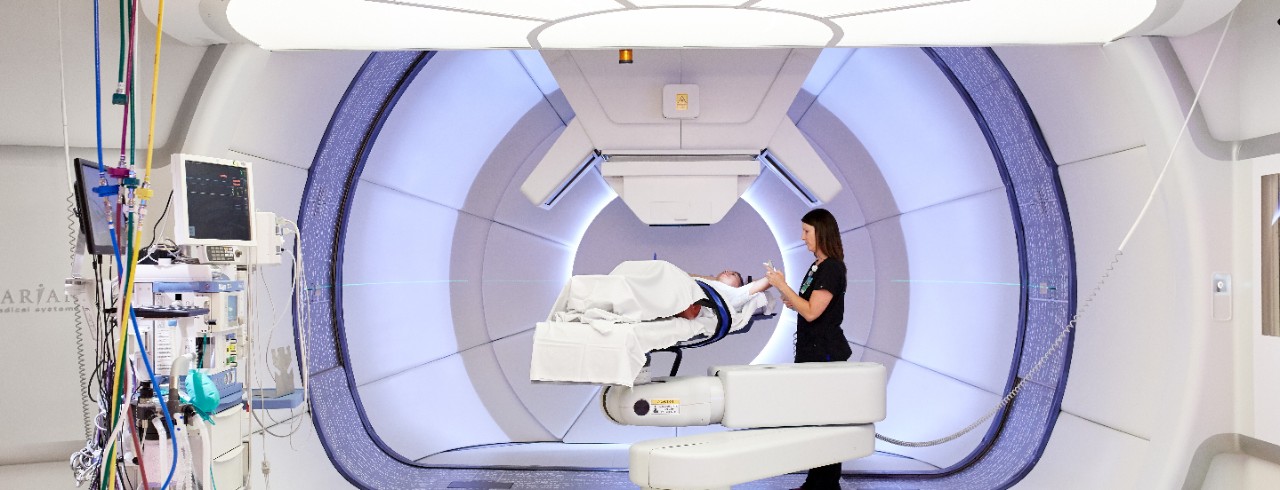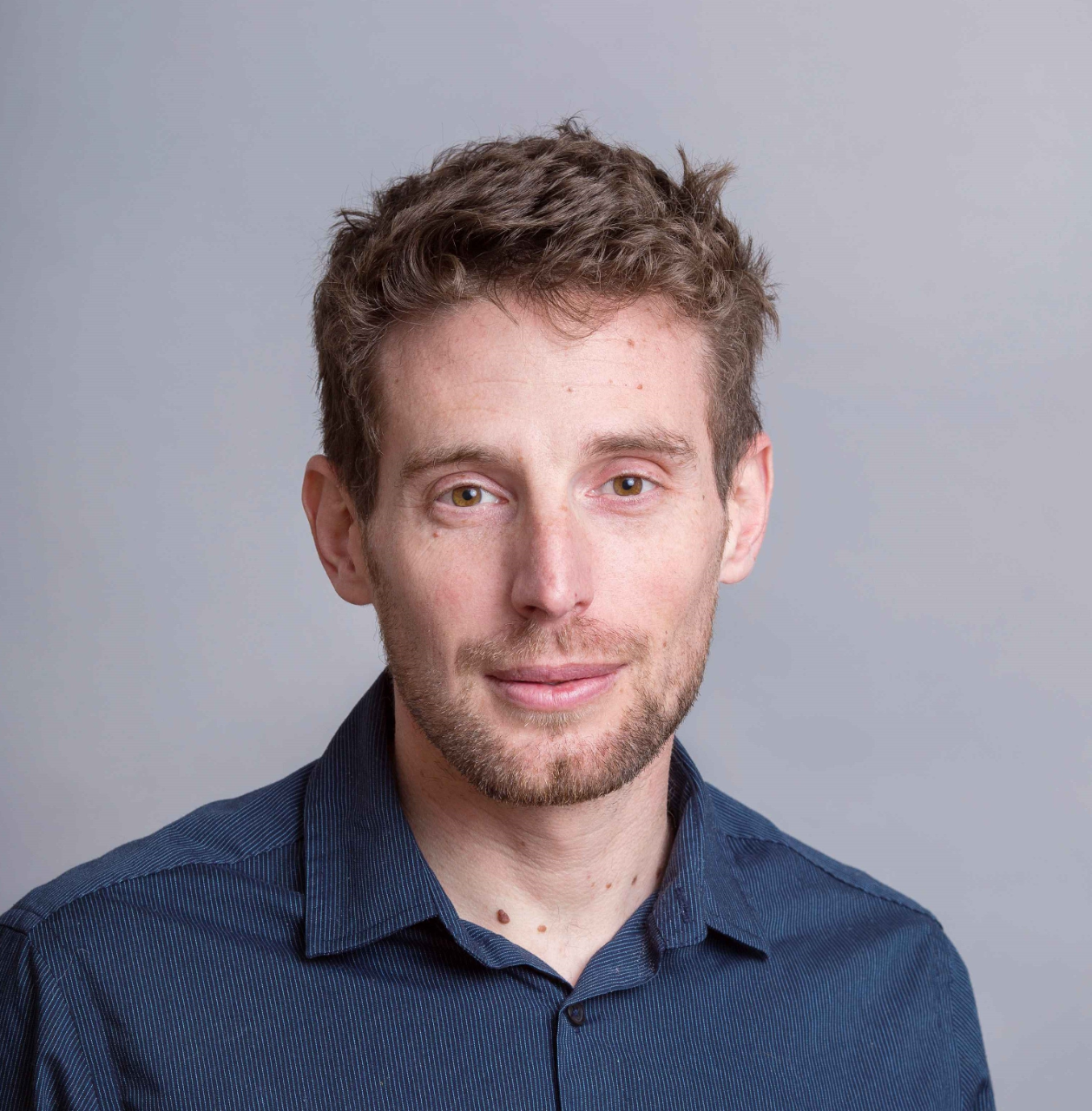
Study: Time is of the essence when saving skin during FLASH radiotherapy
A study shows that intervals in beam treatment decrease the skin-saving aspects of the procedure
A published study by researchers at the University of Cincinnati Cancer Center and Cincinnati Children’s shows that multiple beams and intervals in delivery during FLASH proton therapy treatment reduced skin-saving effects in preclinical models.
The study was published in the International Journal of Radiation Oncology, Biology, Physics.
FLASH is an experimental mode of delivering radiation therapy for cancer that can be delivered to a patient in less than one second and which can be over 100 times faster than conventional radiation therapy.
Research in the laboratory suggests that FLASH may be safer than standard forms of radiation and, in many cases, causes fewer side effects, including irritation or burning of the skin.

Mathieu Sertorio, PhD, corresponding author and a member of the basic science research program within the University of Cincinnati Cancer Center. Photo/Provided by Sertorio.
“FLASH proton pencil-beam-scanning has shown a reduction in skin toxicity for preclinical models when delivered in a single, uninterrupted high dose,” says Mathieu Sertorio, PhD, corresponding author on the paper and a member of the basic science research program within the Center. “However, for treatment of patients, multiple beams are required to diminish the exposure of normal tissue to radiation and to make sure the entire area identified for treatment is targeted. The administration of these beams are separated by minutes to allow patient and equipment repositioning.”
In this study, researchers from the center delivered a particular radiation dose of FLASH radiotherapy in either a single or multiple beams in one area of a model and observed skin tissue over the course of 16 weeks at the Cincinnati Children’s/University of Cincinnati Medical Center Proton Therapy Center. This proton therapy center has the only research-dedicated room in the world.
“The treatment was delivered as one, two or three equal beams with an interruption of two minutes simulating the clinical experience of patients,” explained Sertorio.
Sertorio says that the single beam delivery showed a maximum benefit to skin, but when it was interrupted for two minutes and then readministered in the same area, it reduced the FLASH skin-saving effect. After two interruptions, the skin tissue-sparing effect was further eliminated.
“Our results indicate that the FLASH skin-sparing effect in areas of beam overlap were diminished by multiple beams as opposed to single beams,” he says. “This study suggests the number of beams and the spatial arrangement of those beams are important parameters for FLASH studies. Furthermore, the effect of multibeam delivery is likely different for different organs of interest.”
"This study is important because it informs the clinical translation of FLASH radiotherapy, with respect to beam delivery modalities, treatment planning and radiation prescriptions,” says co-author Anthony Mascia, PhD, of Cincinnati Children’s. “We need to identify where FLASH works and where FLASH doesn't work to move forward."
Innovation Lives Here
The University of Cincinnati is leading public urban universities into a new era of innovation and impact. Our faculty, staff and students are saving lives, changing outcomes and bending the future in our city's direction. Next Lives Here.
This research was funded by Varian, a Siemens Healthineers company. Sertorio, as well as co-investigators Mascia and John Perentesis, MD, from Cincinnati Children’s report research grants from Varian.
Featured photo of radiation therapist situating someone in one of the gantries at the Proton Therapy Center. Photo/Cincinnati Children's.
Related Stories
Camp aims to empower children, teens who stutter
July 17, 2024
A one-week, evidence-based program for children and teens who stutter at the University of Cincinnati will teach kids to communicate effectively, advocate for themselves and develop confidence about their communication abilities. Camp Dream. Speak. Live., which is coming to Cincinnati for the first time July 22-26, began in 2014 at the University of Texas at Austin. The Arthur M. Blank Center for Stuttering Education and Research at UT expects to serve more than 2,000 children at camps across the United States, Africa, Asia and Europe this year.
UC archivist explores Troy’s invisible workers
July 17, 2024
UC Classics archivist Jeff Kramer examined the unheralded and largely uncredited role laborers played in the 1930s excavation at Troy in Turkey.
U.S. stroke survival is improving, but race still plays role
July 16, 2024
U.S. News & World Report, HealthDay and Real Health covered new research from the University of Cincinnati that found overall rates of long-term survival following stroke are improving, but Black individuals experience worse long-term outcomes compared to white individuals.
Presidential challenge to UC: Join Ride Cincinnati to fight cancer
July 16, 2024
UC President Neville Pinto has again challenged every UC college and unit to send at least one rider to the September 14 Ride Cincinnati event to help fundraise for cancer research and cancer care. UC students ride free. Signup by July 31 for free UC-branded cycling jersey.
Pediatric ICU rates linked to housing quality, income, education
July 16, 2024
Healio highlighted research led by the University of Cincinnati and Cincinnati Children's Hospital's Carlie Myers that found a link between pediatric ICU admission rates and housing quality, household income and education.
UC study: Long-term stroke survival improving, but racial disparities remain
July 15, 2024
New research from the University of Cincinnati published in the journal Neurology found long-term survival rates following acute ischemic strokes are improving, but Black individuals experience worse long-term outcomes compared to white individuals.
Students organize to shake up Parkinson's care model
July 15, 2024
University of Cincinnati student and Parkinson's Together founder Mallika Desai joined the Parkinson's Experience Podcast to discuss the nonprofit's origins and multidisciplinary mission to meet the needs of patients in their community.
Immersed in learning
July 15, 2024
The UC College of Nursing is transforming curriculum into immersive virtual reality experiences, providing students with more engaging, hands-on, and equitable learning.
Mobile app could help people manage fibromyalgia, UC study suggests
July 15, 2024
WVXU highlighted research led by the University of Cincinnati's Lesley Arnold and Swing Therapeutics that found a self-guided smartphone-based behavioral therapy led to significant improvements for patients with fibromyalgia.
UC study finds better cardiovascular health outcomes with home hemodialysis
July 15, 2024
Dialysis patients using a more traditional home hemodialysis procedure have lower incidence of cardiovascular disease than patients using a less invasive peritoneal dialysis at home, a University of Cincinnati researcher finds.
